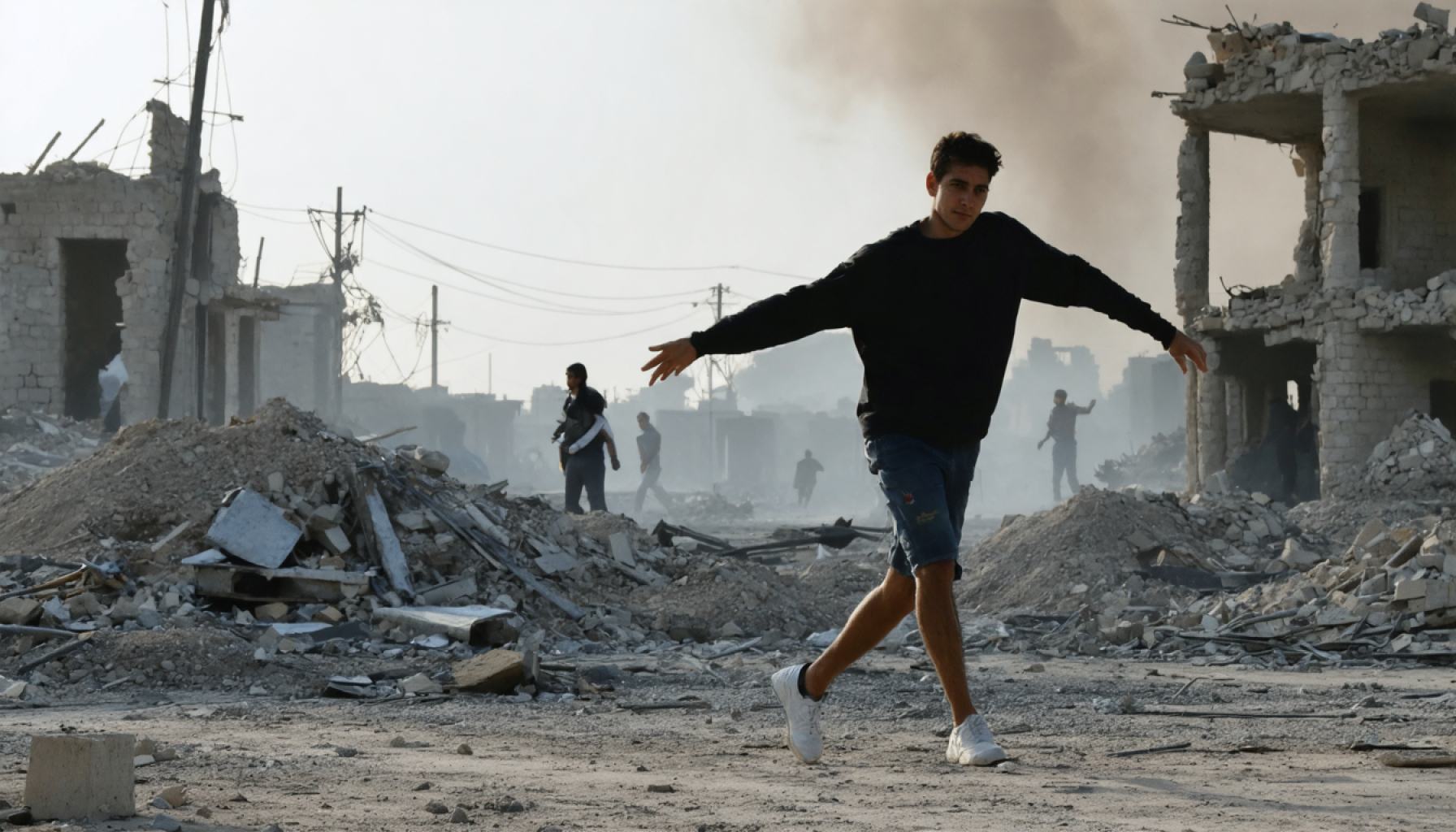- Ongoing negotiations strive to uphold a fragile ceasefire in Gaza amid skepticism and historical tensions.
- Hamas calls for the release of Palestinian prisoners as a condition for extending peace talks with Israel.
- Israel demands an end to perceived provocative ceremonies by Hamas before fulfilling these conditions.
- Escalating military operations in the West Bank see Israeli tanks deployed, raising concerns of increased violence.
- Tensions rise as numerous Palestinian civilians face displacement, forced to leave homes in search of safety.
- The complexity of reaching genuine peace underscores the vital need for trust, an elusive element in the region.
- Global attention focuses on this precarious moment, as decisions made today could shape the region’s future.
Dust swirls in the air over Gaza as tense negotiations attempt to maintain a fragile ceasefire. The streets, once loud with movement, now await the outcome of a delicate balance of power. On one side, Hamas leaders lean against a backdrop of hope and defiance, ready to negotiate the peace, provided certain conditions are met. They urge Israel to follow through on promises of releasing Palestinian prisoners, a key stipulation for extending the ceasefire.
Yet, the air is thick with skepticism and past wounds. Israel hesitates, demanding an end to what it perceives as demeaning ceremonies by Hamas before prison doors swing open. This moment of distrust highlights the profound challenges of mending long-standing rifts, as diplomatic efforts are cautiously wielded like a double-edged sword.
Meanwhile, the West Bank finds itself under renewed scrutiny. Israeli tanks, present for the first time since 2002, roll across its terrain, their presence ominous. Military operations intensify, focusing on camps believed to harbor militants. The specter of displacement looms large as tens of thousands of Palestinian civilians become unwilling spectators in this unfolding drama, forced to flee their homes, glancing back at lives left in turmoil.
In this volatile dance of promises and power, the world watches, holding its collective breath. The ceaseless cycle of action and reaction between these neighbors underlines the crucial message in this moment: true peace requires trust, a precious and elusive element in this storied land. As history unfolds with each decision, the region teeters on the brink, contemplating a future that hangs by a thread.
Unlocking the Complex Web of Israeli-Palestinian Ceasefire Negotiations: Key Insights, Real-World Impacts, and Future Prospects
How-To Steps & Life Hacks: Navigating Ceasefire Development in Conflict Zones
1. Understanding Core Demands: For any ceasefire to hold, both parties need to articulate their primary conditions clearly. As seen in Gaza, Hamas demands prisoner releases, while Israel calls for ending perceived provocations.
2. Building Diplomatic Channels: Engage neutral mediators who can facilitate dialogue without bias. Historical examples show that third-party negotiation can be pivotal.
3. Public Communication Strategy: Both parties should work on a communication strategy to build public support for the ceasefire, minimizing provocations and enhancing transparency.
4. Monitoring and Verification: Establish an independent body to monitor compliance, as international oversight can help instill trust.
5. Gradual Implementation: Begin with symbolic gestures or small-scale implementations showing good faith before tackling larger, contentious issues.
Real-World Use Cases: Examples from Other Conflict Zones
– Northern Ireland: The Good Friday Agreement highlights the importance of incremental trust-building measures.
– Colombia: The peace process with FARC guerrillas shows the effectiveness of staggered and conditional mechanisms.
Market Forecasts & Industry Trends
The global defense industry fluctuates based on regional tensions. If the Israeli-Palestinian situation de-escalates:
– Defense Spending: Regional defense budgets may stabilize, redirecting funds towards economic development.
– Technology Transfer and Innovation: Peace could foster technological collaboration, boosting industries outside defense, like tech startups and agriculture.
Controversies & Limitations
– Asymmetrical Conditions: Disproportionate demands can lead to imbalances where one side perceives its needs are largely unmet.
– External Influences: International politics often complicate bilateral agreements. Coordination with global powers like the US and EU is critical but challenging.
Insights & Predictions
– Long-Term Peace Outlook: Experts argue that durable peace requires addressing core issues like territorial disputes and resource access.
– Upcoming Regional Dynamics: As the Middle East evolves, neighboring countries’ stances will become more influential.
Tutorials & Compatibility
– Mediation Software Tools: Tools like “MediateCheck” can streamline negotiation processes, allowing real-time documentation and analysis during meetings.
– Compatibility with International Law: Ensure that all agreements align with U.N. resolutions to gain international support.
Pros & Cons Overview
Pros:
– Economic Relief: Ceasefires can boost economic stability, enabling infrastructure rebuilding.
– Humanitarian Benefits: Facilitates aid delivery, reducing civilian casualties and displacement.
Cons:
– Temporary Nature: Ceasefires can be fragile, with potential for rapid deterioration.
– Ingrained Distrust: Long-standing grievances can undermine peace efforts.
Actionable Recommendations
– Engage in Multilateral Discussions: Involve more regional players to broaden the base of support.
– Invest in Civil Society: Empower grassroots organizations to promote peace from the bottom up.
Quick Tips
– Follow Established Protocols: Look into frameworks like the Oslo Accords for structured negotiation paths.
– Leverage Digital Platforms: Use digital diplomacy to broadcast positive messages and counteract misinformation.
For further insights on conflict resolution and peace-building, visit United Nations or International Peace Institute.
